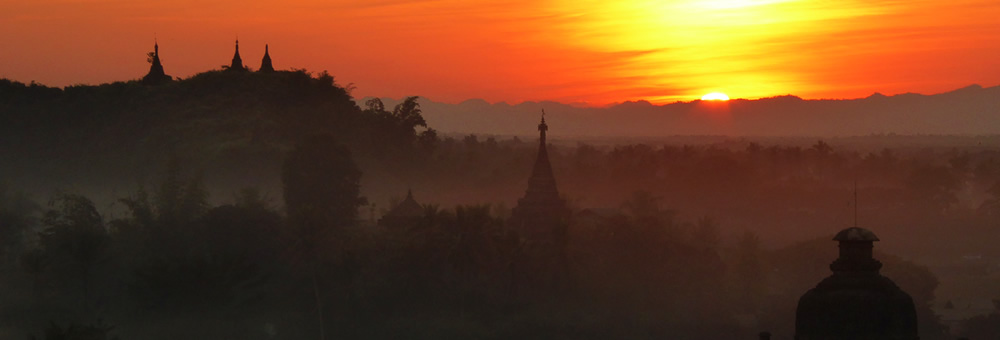Profile of researches
Environment and Heritage Theory
Dr. Keiyo Fujihara History of Modern Japanese Architecture / Theory of Environment for Arts and Culture / Cultural Resources Studies / Cultural Policy Studies
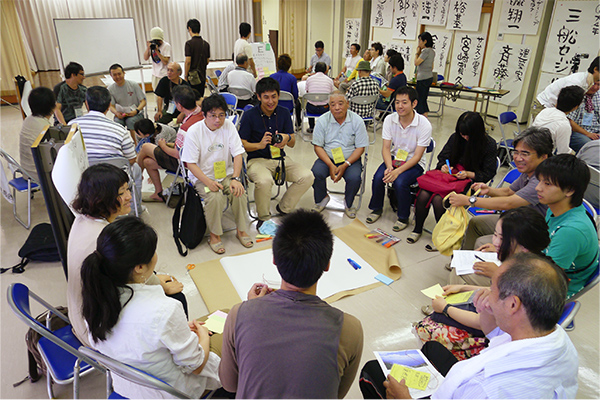
I conduct empirical research into the process of Japan’s modernization transecting architectural, urban, and life-culture design, while at the same time carrying out educational activities regarding broad workshop concepts and citizen-participation urban development aimed at realizing a participatory cohesive society, taking a leading role at actual urban development sites. In addition, I also promote the creation of ties linking art and society from both philosophical and practical perspectives, carrying our research and practical projects based on a complex perspective encompassing fieldwork, art projects, local regeneration, creative cities, and World Heritage sites.
Dr. Kazuo Asahiro Landscape Conservation
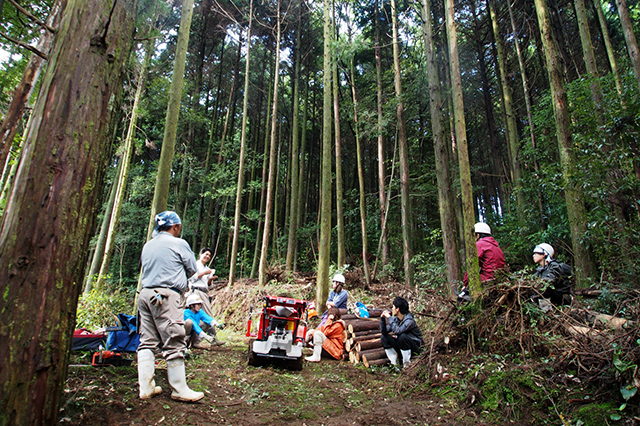
“It is not half so important to know as to feel.”
These are the much-quoted words of Rachel Carson, from her essay “The Sense of Wonder.” The concept of “conservation” in “conservation of green spaces” is sometimes explained in the United Kingdom as being “like raising children.” “Taking care” of “nature” (or children)—that is, not standing back and simply letting things happen—means to take a hands-on, eyes-on approach to nurturing, or maintaining relationships. Such attitudes and behaviors are necessary for families, for communities, to share healthy lifestyles, to share time and space, with nature in a sustainable manner.
This laboratory targets green space environments in suburban areas and rural communities, which are nurtured within such relationships between people and nature. Through human conservation management, the biodiversity, amenities, aesthetics, production of agricultural and forestry products, disaster prevention, and other public-interest functions of green space environments are maintained. The laboratory’s research aims are to provide society with conservation designs (plans/designs) that contribute to the relationship between people and nature by carrying out research and education, making recommendations, and implementing projects in cooperation with local residents, government agencies, and specialists, committing to social issues in order to promote sustainable community living environments as well as conservation/regeneration of the natural environment, analyzing historical and natural contexts, and clarifying conservation mechanisms. Our ultimate goal is foster human resources capable of sensing and conveying the beauty of the environment.
Our main research themes are conservation of secondary nature and forests, ecological research of secondary woodlands, research related to rehabilitation of agricultural land through mutual assistance in disasters, research related to volunteer tourism, and research related to green space conservation in Bangladesh. With the flow of these research themes, going forward we seek to develop various activities that can better address issues facing the real world:
- What form should secondary nature/forest conservation models take in the future in order to be successful as small-scale businesses?
- How should agricultural villages in hilly and mountainous areas develop amidst the depopulation of local society?
- How should value be added to traditional crop plants and landscapes, and how should these be conserved through industrial development?
- How can communities capable of coordinating mutual assistance and cooperation be created?
- Can secondary nature/forest conservation topics be developed through art?
Dr. Yuki Kato History of Japanese Architecture
My research focuses mainly on shrine and residential architecture in Edo period; driven by the interest on the value that people find in architecture and the kind of consideration when people built architecture. Current interests are as follows.
- Study on the human relationship with architecture (not limited to building, but also using, seeing, demolishing etc.)
- Positive evaluation on the history of architecture in localized area, which may not be restricted to part of the history of Japanese architecture. For example, the attempt to present an architectural history of Fukuoka, Kyushu and the area around East China Sea.
- Re-examination of existing history of Japanese architecture, based on the study of historical documents and historiography of Japanese architecture.
Environment and heritage management
Dr. Hiroyuki Kanekiyo Landscape Architecture / Landscape Planning and Design
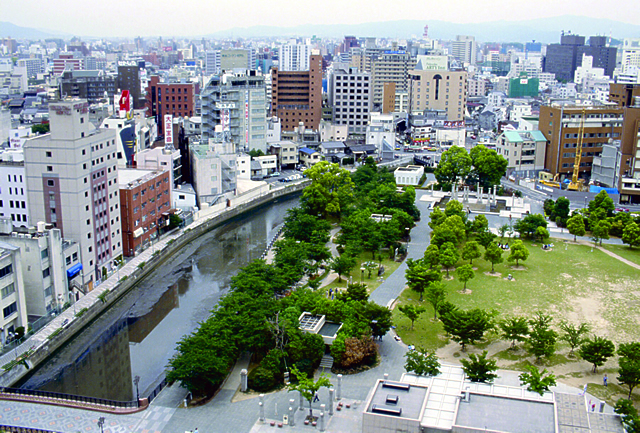
The principal objective is to establish the planning approach of open space systems for improving the urban or rural landscape based upon a people’s behavior and the characteristics of living environments.
A people’s behavior will be investigated from the view of the environmental perception and accessibility to the open spaces and landscape elements. Also the position effectiveness of the landscape resources to the living environments will be studied based on the inter-relations between them. The results or the experiences on some case studies in the actual fields will be presented in the class lectures (Landscape Architecture, etc.) and the Landscape Project.
Research Interests:
- The Planning Approach for Establishing the Landscape Identities based upon Living Environments
- Streetscape in sight seeing area
- Planning approach for open space systems including water front in urban and natural area
- Landscaping characteristics based on people's gardening activities
- Rural landscape conservation
Dr. Masakazu Tani Environmental Anthropology, Cultural Anthropology
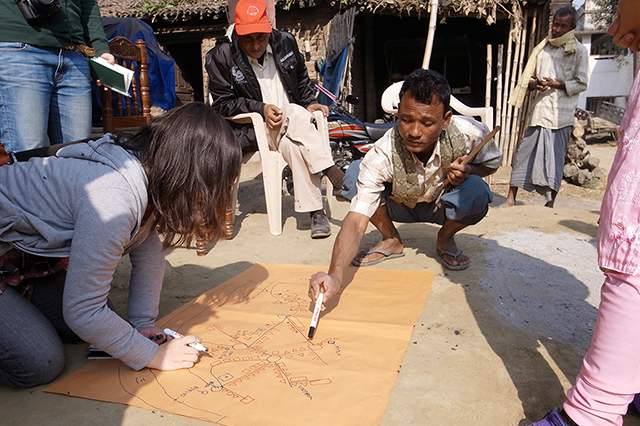
In fields centered in South Asia, I conduct research based on local surveys on the main theme of the relationship between environmental issues and poverty. The aim of this research is to clarify the direction of design that improves the living environment for residents of developing countries. Specific themes include the relationship between damage to health due to arsenic pollution of underground water and residents’ social attributes, and the impact of the poor population on deforestation. In addition, through research on development assistance methodology based on cultural understanding, I also conduct research on the form outside intervention should take in order to achieve more sustainable assistance results; recording traditional life culture elements in developing countries; methodology for fostering cultured prided through added-value; and living environment design in areas known as “marginal villages” in Japan’s hilly and mountainous areas.
Dr. Kayoko Kondo Environmental Policy / Environmental Economics / History of Social Thought
We are studying the mechanism or the design of society that can achieve or create a sustainable regional environment based on natural circulation. We are especially interested in clarifying the process and action factors with which citizens and businesses voluntarily and continuously become involved with a certain regional environment with enthusiasm. We need a scale to objectively evaluate the style and design of regional development for different entities to reach a social consensus and to create more effective policies. We are developing LCA and various indexes for specific purposes.
Main research theme- Issues of using biomass in regions, social index, analysis of entities with a focus on biomass resources, such as kitchen garbage, wooden wastes, and livestock wastes
- Autonomously developing social models of renewable energies in regions in Japan and Asia
- The establishment of circulation-oriented regional society through the participation of citizens and the analysis of the activities of organizations such as NPOs
- The comprehensive analysis of low-carbon lifestyle in the living environment
Dr. Ayako Fukushima Cultural Property Studies
I carry out historical survey research on cultural properties, assessing tangible and intangible value. One recent theme in particular is assessing the value of religious heritage maintenance activities. Specific research subjects include modern Catholic cathedrals in Hong Kong, Kyushu, and Kanto and the various people involved in their maintenance.
Dr.Masaaki Iwamoto Architectural Design
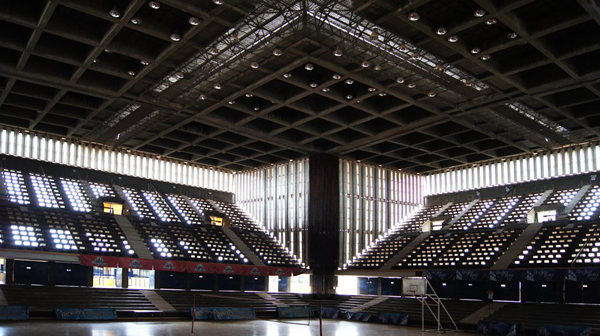
Stadium in Phnom Penh
Design of Modern and Contemporary Architecture in Asia
In the 20th century, architectural design theories had been developed mainly in the Western countries. The objective of my research and practice is to evaluate modern and contemporary architecture in Asia and extend the realm of the possible for architectural design. Current research interests are; Modern movement in Southeast Asian countries; Architectural design in hot and humid climates.
Dr. LOH Wei Leong Leon Design Education Curriculum Planning and Development
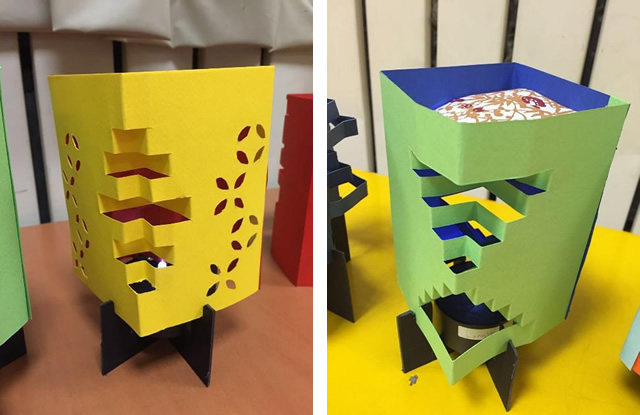
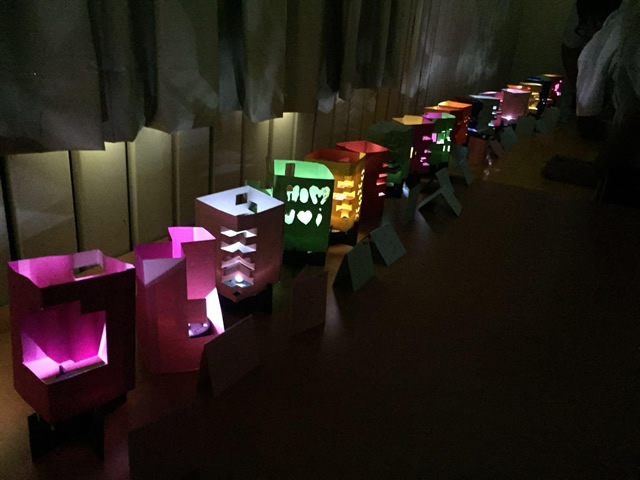
Focusing on the product design education at tertiary and per-tertiary level in the context of Asia, the current research activities aimed to approach the study on product design education curriculum with the following objectives:
- Firstly, the research hope to establish and clarify the pedagogies for developing necessary knowledge and skills at undergraduate level, relevant to respond the growing regional and global issues.
- Secondly, the research hope to clarify the role of industry in the design education ecosystem in the development of necessary knowledge and skills in prospective design professionals.
- Thirdly, the research hope to clarify the characteristics of pre-tertiary design education in Asia and conduct extensive research and development of educational programmes, curriculums, teaching and learning strategies and teaching and learning aids that will strengthen design learning at per-tertiary level.
Environment design technology
Dr. Naoyuki Oi Environmental Psychology / Environmental Behavior Studies, Built Environment Design (Especially Lighting and Visual Environments)
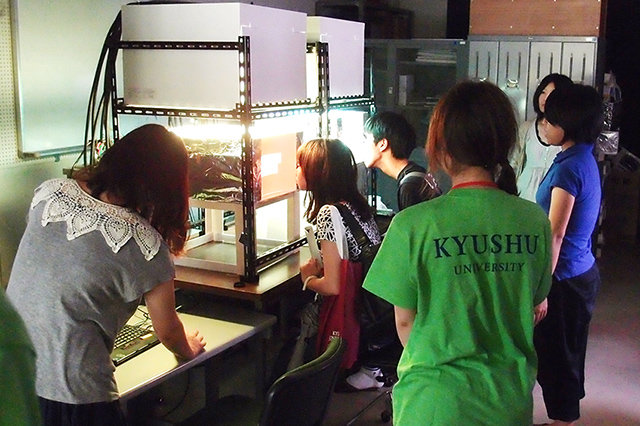
In the Oi Laboratory, research is conducted broadly in the fields of environmental psychology and architectural spaces, as well as human psychology and behavior. The laboratory’s main research concerns the environmental psychological evaluation of architecture and cities (spatial forms, light/lighting, landscape, etc.) and the design and evaluation of visual environments (lighting, light, color).
- Research related to lighting safety and appropriateness
- Evaluation of visual environments based on luminance distribution and research of design methods
- Research related to the creation of human domains in architectural/urban spaces
- Research related to route searches and spatial perception
- Research related to Japanese people’s aesthetic consciousness
- Research related to sense of openness and separation for spaces
- Research related to visual environment simulation methods
- Research related to psychological evaluation of urban landscapes
- Research related to mechanisms for evaluating comfort
- Research related to psychological effects of temporal changes in the environment
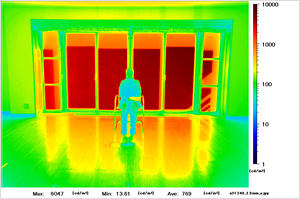
Luminance data and how people experience light are studied to facilitate lighting design and the creation of luminance distribution images.
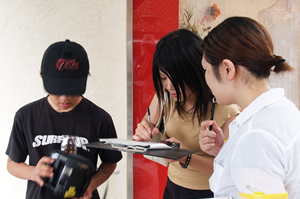
The characteristics and impressions of the photographed things or events that drew their attention are recorded in an interview format as nearly as possible in the person’s words.
Dr. Tomokazu Yoshioka Building Engineering, Aseismic Construction, Reinforced Concrete Construction
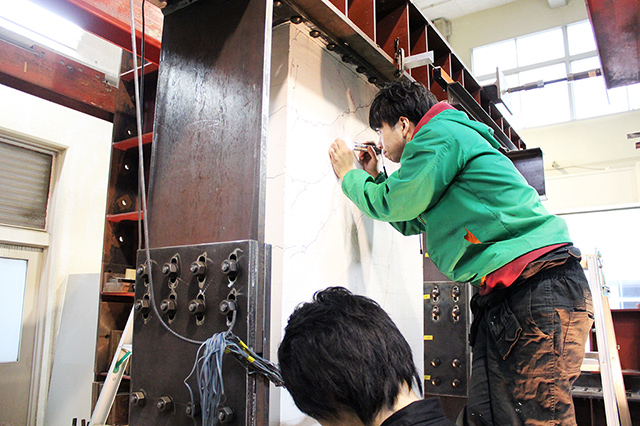
We are conducting R&D regarding new techniques and construction methods mainly for enhancing the earthquake safety of buildings. Previously we have conducted R&D regarding increasing friction in friction bonding of high-strength bolts; development of a new friction damper using aluminum alloy sliding materials; and new construction methods using friction dampers that reduce building damage in earthquakes. Recent research themes include research related to damping devise integration in RC secondary walls using friction dumpers and evaluations of earthquake damage caused to RC secondary walls with the aim of reducing the damage frequently caused to condominium complexes by earthquakes, as well as the development of bolt friction joints that can be applied to timber structures with the aim of making the bolt joints high-rigidity and high-toughness joints in order to enhance the seismic capacity of timber structures.
Dr. Tomo Inoue Planning of Building Construction, Management and Organization of the Building Process
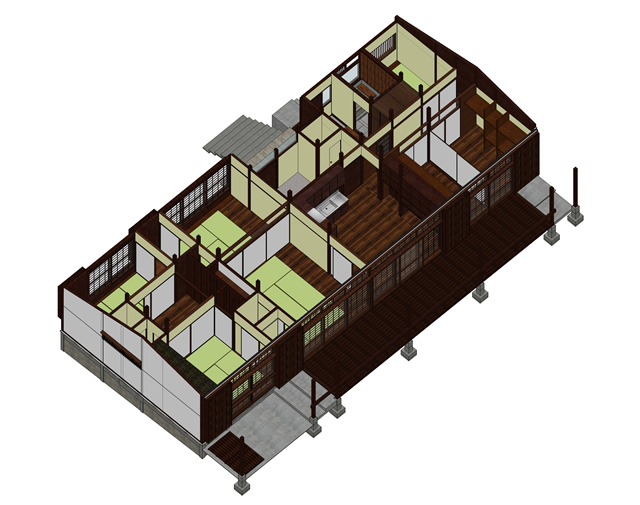
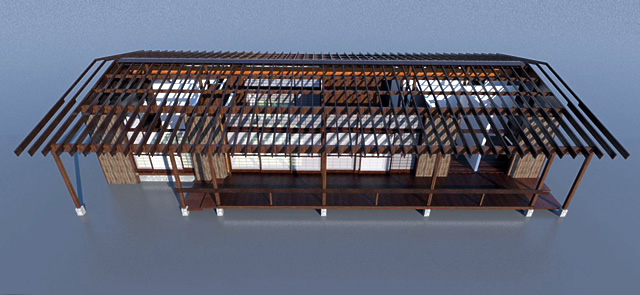
In the Inoue Laboratory, research is conducted on architectural mechanisms, mechanisms for creating architecture, and mechanisms for utilizing architecture.
- Research related to the independence of homes as viewed from the standpoint of self-renovation: DIY, women’s DIY, renovation
- Research on digital architecture archives: BIM archives, architectural works, documentation, digitalization, parts
- Research regarding the form architecture should take in the age of population decline: use of vacant houses and vacant spaces, island regions, marginal villages, maintenance of living environments
- Overseas survey research: Myanmar, Bangladesh, Thailand, China, Thailand
- Historical research regarding the development of building materials and their application to construction: glass, tiles, curtain walls
- Research related to building skins: facades, façade engineering, design organization
- Research related to the earthquake resistance of non-structural elements: ceilings, exterior walls, smoke barriers, lighting equipment, equipment/devices, furniture/fixtures
- Research related to the corrosion resistance of steel sashes: weather resistance, rust, condensation, incoming salt amounts
- Research related to the color of the interior of modern housing: interior finish materials, color
Dr. Tomoko Imasaka Environmental Chemistry
A variety of environmental pollutants are wide-spread into the atmosphere, ocean, and soils in the world, due to recent social activities in industry, transportation, and comfortable life. For this reason, it is desirable to develop advanced technology for assurance of the pollution by numerous chemical species that affect the human life. I am now studying new technology for theoretical prediction of the spectral property of these toxic compounds and also developing new instrumentation for trace analysis of the environmental pollutants including carcinogenic substances in PM2.5, pesticides in foods, and allergy compounds in fragrance present in our modern human life.
Dr. Yoichi Kawamoto Urban Environment
Today, approx. 50% of the world’s population lives in cities, and city dwellers spend most of their time inside buildings. In living their everyday lives, people are affected by their surrounding environment and in turn affect the environment around them as interaction. While also aiming to improve the comfortableness of living environments, we undertake our research activities mainly from the perspective of warmer environments in order to create a sustainable society that reduces the load on the natural environment.
